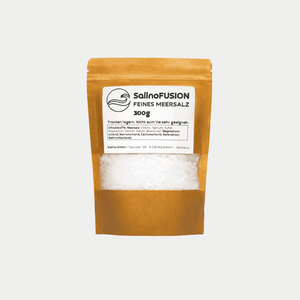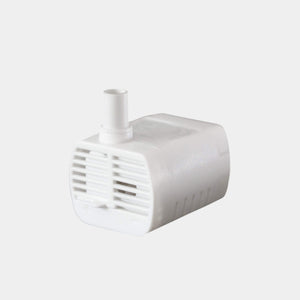When breathing is difficult
It often begins imperceptibly. The air seems thicker, your heart beats faster, the window has been open for a long time – but relief doesn't come. Anyone who regularly works out at home might be familiar with this feeling. Your lungs are working, but your body remains restrained. What many don't realize: The success of a workout depends not only on discipline or training plans – but also on how we breathe. And the air we live in.
Home workouts have become an integral part of our everyday lives. Whether due to a lack of time, convenience, or simply because it's efficient, more and more people are training at home – and thinking about muscles, endurance, and perhaps even nutrition. But the foundation of all this is breathing. It's our primary source of energy – and often our biggest blind spot.
There's also a factor that's rarely considered when it comes to dumbbells, yoga mats, and stretching videos: the quality of the indoor air. Especially when breathing intensively while exercising, it becomes clear how much dry heating air, particulate matter, or allergens can affect performance—and well-being.
This article takes you on a search for the invisible: how breathing, indoor air quality, and exercise interact at home. And how you can combine them in such a way that they can create real strength—not only for the body, but also for the mind.
The underestimated power of conscious breathing
![]()
 Why we have forgotten how to breathe
Why we have forgotten how to breathe
In a world full of stimuli, to-do lists, and constant tension, many of us breathe as if we were on the run. Shallow, hectic, often only into our chests – this is how we supply our bodies with just enough oxygen to function. Not to thrive. Breathing, actually an instrument for inner balance, degenerates into background noise in everyday life. Yet it's more than just a reflex – it's a bridge between body and mind.
Breathing plays a crucial role, especially during home workouts. If you don't control it, you miss out on valuable potential: strength exercises become inefficient, your heart rate remains high, and recovery is delayed. Conversely, conscious breathing – for example, by exhaling while tensing – can not only improve performance but also provide mental stability.
The science behind breathing
Research shows that proper breathing reduces stress hormone levels, lowers blood pressure, and improves concentration. This is particularly effective with breathing techniques such as:
- Abdominal breathing : It activates the parasympathetic nervous system – the part of the nervous system responsible for rest and regeneration.
- 4-7-8 breathing : Inhale for four seconds, hold for seven, exhale for eight – this technique is recommended by sleep medicine specialists, among others, for relaxation.
- Nose breathing instead of mouth breathing : It filters, warms and humidifies the air, strengthens the lungs and increases oxygen absorption.
What's particularly exciting is that even short breathing sessions—about three minutes a day—can have demonstrable effects on well-being and physical performance. When combined with exercise, the positive effects are amplified: Breathing becomes deeper, more conscious, and more rhythmic—and the body thanks you with more energy and inner peace.
Indoor air – the often overlooked training factor
 When your breath catches and no one knows why
When your breath catches and no one knows why
Imagine you're giving it your all. Your workout is going, the music is pumping, your heart rate is rising – but you feel sluggish. Your head is getting dull, your breathing is getting rough. Not because you're unfit. But because you're training in a space that's slowing you down without you even realizing it.
Indoor air quality isn't just a nice-to-have when working out at home—it's crucial. Pollutants, particulate matter, allergens, and CO₂ accumulate faster than we'd like, especially indoors. Windows that are rarely opened to save energy, carpets that shed microfibers, furniture that emits fumes, and dry air from heating or stagnant heat in the summer—all of this directly affects your breathing—and thus your performance.
What “good” indoor air actually means
Good air is clear, fresh, slightly humid—and above all: free of invisible pollutants. According to the Federal Environment Agency, the ideal CO₂ level is below 1000 ppm. Anything above this reduces concentration and performance. Relative humidity also plays a role: If it's too low (below 40%), mucous membranes dry out, increasing susceptibility to infection. Excessive humidity, in turn, can promote mold growth.
In a home gym (be it the living room, basement, or guest room), this often presents a real dilemma: Ventilating the windows helps, but is usually not enough. Plants can improve the air quality , but they emit CO₂ at night. And those who suffer from allergies bring new problems into their homes by letting in too much outside air.
What you can do – and why it’s worth it
Even simple measures can significantly improve your indoor air:
- Regularly ventilate – ideally every 1-2 hours for 5-10 minutes.
- Measure humidity with a hygrometer. Optimal: 40–60%.
- Targeted air purification – for example through salt air devices or activated carbon filters.
- Minimalist furnishings – avoid unnecessary dust collectors.
- Do not exercise directly after vacuuming or cooking – to keep particulate matter and VOC concentrations low.
Good indoor air quality not only improves training results, but also reduces headaches, allergy symptoms, and fatigue—the very things that would otherwise slow you down during your workout. If you want to breathe consciously, you need an environment that allows you to do so.
Exercise as the key to healthy breathing
 When you move, you change your breathing – and vice versa
When you move, you change your breathing – and vice versa
Exercise is more than just building muscle or burning calories. It's a dialogue with your body. And this dialogue begins with your breath. During training, we suddenly feel it: how it becomes faster, deeper, more intense. Every squat, every jump, every yoga pose forces us to breathe differently—more consciously, more rhythmically, more powerfully. Those who recognize this can view their home workout as a breathing exercise. And vice versa.
People with respiratory diseases such as asthma, COPD, or allergies particularly benefit from targeted physical activity. Studies show that regular exercise can not only stabilize lung function but also inhibit inflammatory processes. Even moderate exercise improves oxygen uptake and reduces shortness of breath in everyday life.
Why home is the best place for it
Home workouts offer a decisive advantage here: They're individually adaptable, free from external stimuli—and ideally, combined with clean air. No one's watching, no one's rushing you. You can take breathing breaks, adapt exercises, and focus on your inner self.
Forms of exercise such as yoga, Pilates, or functional training (e.g., using your own body weight) allow for conscious breathing. Breathing into the flow of movement during a sun salutation, for example, or using your exhalation for stabilization during a lunge, connects two systems into one: the body and the breath.
In addition, exercise also helps indirectly – by reducing stress. Less stress means less shallow breathing, less tension in the diaphragm, and less hyperventilation. The body returns to a natural breathing rhythm that many have long since lost in everyday life.
Movement without pressure – but with effect
You don't need an hour of HIIT or weights. Just 20 minutes of exercise a day—mindful, with a focus on breathing—can make a huge difference. Particularly valuable:
- Dynamic stretching : combines body awareness with breath flow.
- Balance exercises : force inner centering and calm breathing.
- Walkouts, planks or light core exercises : strengthen the diaphragm.
If you consciously pay attention to your breath, you are training more than just your muscles: you are training your life.
Conclusion: Your breath, your space, your body – an interplay with power
Those who train at home often believe they're doing enough. But exercise alone is only part of the equation. It's the invisible factors—the quality of your air, the depth of your breath, and your awareness of your body—that can truly transform your workout.
Breathwork doesn't begin with meditation. It begins in everyday life, when walking, bending over, waking up. And it unfolds its potential especially when we give it space—literally. Good indoor air quality isn't a wellness bonus, but a prerequisite for health. Especially if you're active every day, sweating, breathing, and moving—your body needs support, not stress.
What remains is a simple thought: If you start taking your breathing seriously, your body will thank you. With more energy, more peace, and a better quality of life.
Additional information: Salt air for your home
If you want to specifically improve your breathing quality – especially in rooms where you exercise or sleep – a saline indoor climate can be an effective addition. The mini saline creates saline air similar to that found on the seashore – compact, filter-free, and without ultrasound, which is especially appreciated by pet owners. Users report positive effects, especially in dry, heated air in winter or with recurring respiratory problems.



